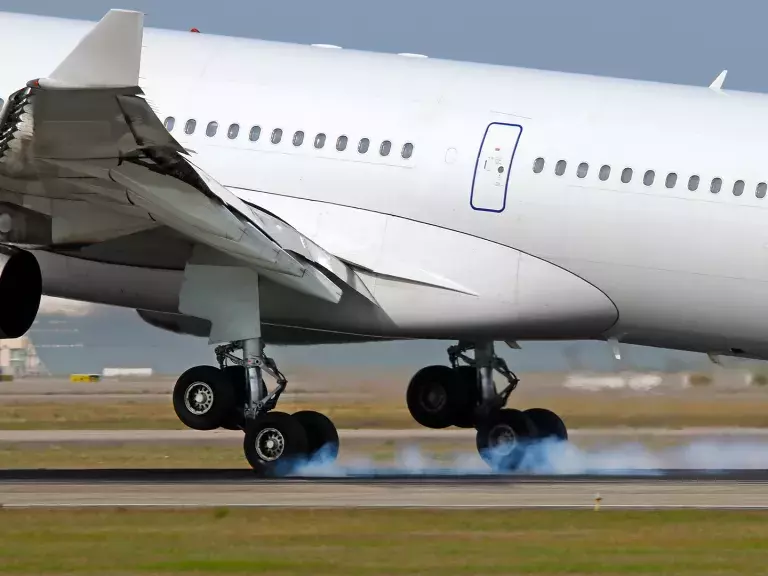HITEC has a long history of providing strain gauging services and sensors in applications for space exploration, dating back to the 1970’s. This article explores how HITEC’s custom force sensor solutions are shaping the future of aerospace technology, offering insights into the challenges, innovations, and solutions.
CUSTOM FORCE SENSORS FOR SPACE APPLICATIONS
In the rapidly evolving field of aerospace engineering, the demand for precision and reliability has never been greater. As space exploration and advanced aircraft design push the boundaries of technology, the need for specialized sensor solutions becomes increasingly critical. Custom force sensors and strain gauge solutions are at the forefront of this innovation, playing a pivotal role in ensuring the safety, efficiency, and success of aerospace missions.
HITEC, a pioneer in strain gauging services and sensor technology, has been at the cutting edge of these developments for decades. The sensors developed by HITEC are used to measure the forces (torque, and clamping force) in aeroplane and space shuttle braking systems, and is used as feedback for the control system.
HYDRAULIC V.S ELECTONIC BRAKING SYSTEMS
The design specifications for the new spaceplane necessitate the integration of an advanced electronic braking system, superseding the conventional hydraulic braking mechanisms typically found in older aerospace vehicles. This shift towards electronic braking is in line with the broader adoption of fly-by-wire technology, a system that has become increasingly prevalent in both commercial and military aviation sectors. Fly-by-wire systems replace traditional mechanical controls with electronic interfaces, offering significant advantages in terms of cost efficiency, weight reduction, and environmental impact.
One of the primary reasons for selecting fly-by-wire over hydraulic systems lies in its ability to substantially reduce the overall weight of the aircraft. Hydraulic systems are not only heavy due to the need for extensive piping, fluid reservoirs, and pumps, but they also require regular maintenance and pose environmental concerns related to fluid leakage and disposal. In contrast, electronic systems are lighter, require less maintenance, and eliminate the need for environmentally hazardous hydraulic fluids. This makes them a more sustainable choice, aligning with the growing emphasis on eco-friendly technologies in aerospace design.
Moreover, fly-by-wire technology is exceptionally well-suited for integration with remotely piloted or autonomous systems, a key capability required for the new spaceplane. Traditional hydraulic systems, with their reliance on physical connections and manual controls, present challenges when adapted for remote operation. On the other hand, fly-by-wire systems, which rely on digital signals transmitted through electronic circuits, can be seamlessly integrated with remote piloting interfaces, allowing for precise control and maneuverability even from a distance. This is particularly critical for a spaceplane, which may be required to operate in environments where direct human control is impractical or impossible.
The incorporation of fly-by-wire systems also enhances the spaceplane's adaptability and responsiveness. By utilizing electronic controls, the design allows for greater flexibility in terms of software updates and system modifications, enabling the spaceplane to evolve with advancements in technology without requiring significant structural changes. This future-proofing capability is vital in an era where aerospace technology is rapidly advancing, ensuring that the spaceplane remains at the cutting edge of innovation throughout its operational life.
CHALLENGES WITH SPACE FLIGHT SENSING
Designing and manufacturing force sensors for harsh environments, such as those encountered in space, presents a unique set of challenges. These sensors must be fully qualified to withstand the extreme conditions of spaceflight, including intense vibration during launch, significant fluctuations in temperature ranging from the searing heat of direct sunlight to the frigid cold of deep space, and the near-absolute vacuum of the space environment. Additionally, these sensors must be resilient to high levels of radiation, which can degrade materials and electronics over time. Ensuring that force sensors remain accurate and reliable under these conditions requires the use of specialized materials and advanced engineering techniques to protect sensitive components. The manufacturing process must also adhere to stringent quality control standards to ensure that each sensor can endure the demanding conditions of space without failure, as any malfunction could jeopardize the success of the mission.
Subscribe for Insights
Industry insights, trends, events and unmissable content straight to your inbox
Sign up to our newsletter to get insider access to stay up to date with all things custom strain gauge sensing
HITEC'S SOLUTION: CUSTOM STRAIN GAUGE SENSORS
HITEC specializes in executing complex designs from the drawing board through to the final finished solution. We design custom strain gauge sensors that both fit the mechanical constraints and meet the accuracy requirements of the aerospace industry, due to our state of the art AS9100 Certified facility in Sri Lanka (HITEC’s Center of Excellence for Aerospace).
The application is an example of HITEC’s ability to not only design a strain gauge-based force sensor, but also to design the custom electronics, and our ability to marshal the required resources from multiple sources, to meet the customer’s requirements.


